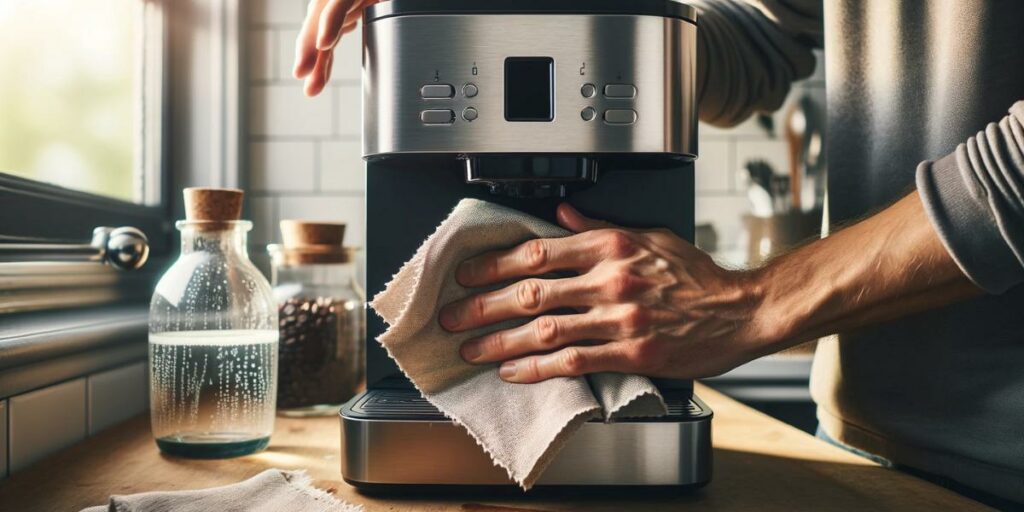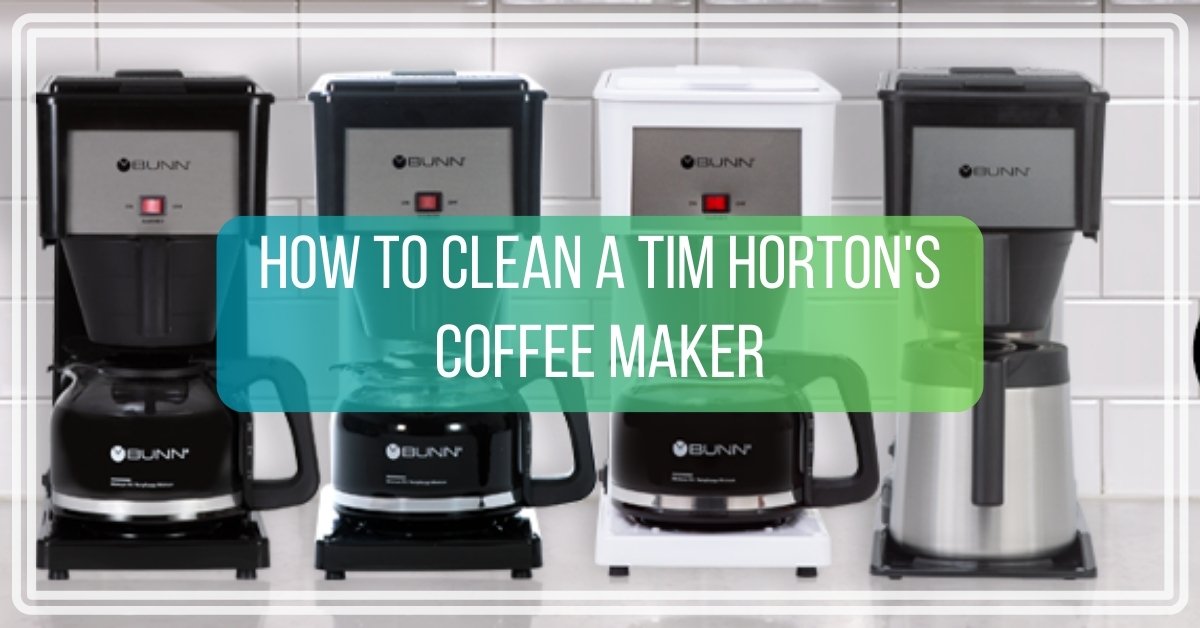Nothing beats the aroma of freshly brewed coffee in the morning, especially when it’s from your beloved Tim Horton’s coffee maker. However, to keep enjoying that perfect cup, regular cleaning is essential. Not only does it ensure the best taste, but it also extends the life of your machine. In this comprehensive guide, we’ll walk you through an easy, effective way to clean your Tim Horton’s coffee maker using simple household items.
First, let’s appreciate why cleaning your coffee maker is crucial. Over time, hard water minerals, coffee oils, and other residues can build up inside your machine, affecting its performance and the taste of your coffee. Regular cleaning ensures every cup you brew is as delicious as the first.
Things You’ll Need
- Vinegar
- Cloth
- Dish soap
These everyday items are your allies in maintaining a pristine coffee maker. Now, let’s dive into the cleaning process.
Step 1: Prep Your Coffee Maker
Start by removing and discarding any used filters from the coffee maker. This is an essential first step as it clears the way for a thorough cleaning.
Step 2: The Vinegar-Water Solution
Mix equal parts water and vinegar and fill the coffee maker’s water reservoir with this solution. Vinegar, with its natural acidity, is excellent at dissolving mineral buildups and cleaning out coffee oils.
Turn on your coffee maker and let it run until the pot is half full. Then, pause the brewing process and let the vinegar solution sit for 10-15 minutes. This pause allows the solution to work its magic inside the machine.
After the soaking time, resume the brewing process.
Let the coffee maker complete its cycle, filtering the remaining vinegar-water solution. This ensures the entire system gets a good cleaning.
Step 3: Exterior Wipe Down

Once the coffee maker cools down, prepare to clean its exterior. Wet a cloth and add a teaspoon of vinegar. Gently wipe down the outside of the machine. This step not only cleans but also gives your coffee maker a fresh, new look.
Step 4: Rinse the Coffee Pot
Remove the coffee pot and discard the vinegar solution. Wash the pot with warm, soapy water, making sure to rinse it well. This removes any vinegar residue, leaving your coffee pot sparkling clean and ready for use.
Step 5: Run a Water Cycle
To ensure all vinegar taste is gone, run a full cycle with just water. This step is crucial for removing any lingering vinegar residue inside the coffee maker.
Cleaning your Tim Horton’s coffee maker isn’t just about taste; it’s also about maintaining the machine’s efficiency and longevity. Regular cleaning, ideally once a month, will keep your coffee tasting great and your machine running smoothly.
Tips for maintaining your coffee maker:
- Use Filtered Water: This can reduce mineral buildup inside your coffee maker.
- Descale Regularly: If you live in an area with hard water, descale your machine more frequently.
- Check for Wear and Tear: Regularly inspect your coffee maker for any signs of damage or wear.
- Replace Filters as Needed: Always use fresh filters for each brew to ensure the best taste.
With this simple cleaning routine, your Tim Horton’s coffee maker will continue to be a reliable part of your daily ritual. Not only will it function better, but your coffee will also taste fresher and more delightful.
Imagine the joy of starting each day with a perfect cup of coffee from your freshly cleaned coffee maker. It’s about more than just caffeine; it’s about the pleasure and comfort of a well-maintained home appliance. So, embrace this cleaning routine and enjoy the difference it makes in every cup of coffee you brew.
Keeping Your Tim Horton’s Coffee Maker in Top Shape
Your Tim Horton’s coffee maker is more than just a machine; it’s the heart of your kitchen, bringing warmth and energy to your mornings. Ensuring it’s clean and well-maintained is key to its longevity and performance.
Coffee makers are prone to limescale and coffee oil buildup. These can not only affect the taste of your coffee but also hinder the machine’s efficiency. Regular cleaning ensures that each brew is fresh and delicious.
- Monthly Vinegar Cleanses: Incorporate the monthly vinegar cleaning routine to prevent mineral and oil buildup.
- Daily Rinsing: After each use, rinse the pot and filter basket with warm water. This simple daily habit can prevent a lot of buildup.
- Descale As Needed: If you notice a change in brewing time or taste, it might be time for a descaling session.
Every coffee maker is unique, and so are your water and brewing habits. Adjust your cleaning routine based on the hardness of your water and how often you use the machine. The more you brew, the more attention your coffee maker will need.
While vinegar is a great natural cleaner, ensure it’s diluted properly. Too much acidity can damage internal parts. Always follow with several water cycles to remove any vinegar residue completely.
Cleaning your Tim Horton’s coffee maker not only ensures great-tasting coffee but also contributes to a healthier lifestyle. A clean machine means your coffee is free from any unwanted residues or buildup.
Regular maintenance of your Tim Horton’s coffee maker is a small but significant commitment to the quality of your coffee and the life of your machine. Embrace this cleaning routine, and you’ll ensure that your coffee maker continues to be a source of joy and comfort in your daily life.
At the end of the day, the effort you put into maintaining your coffee maker pays off in every satisfying cup of coffee. It’s a ritual that goes beyond cleaning; it’s about cherishing and making the most of those small, daily moments of pleasure. So, here’s to great coffee, made even better by a clean, efficient coffee maker!

